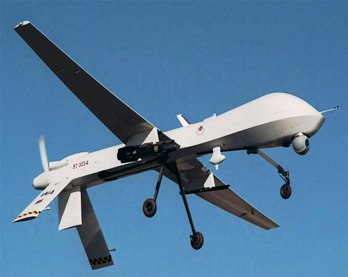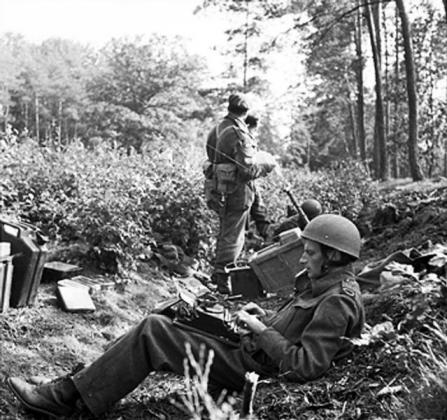
In war, no one’s hands are clean.
Whether by “boots on the ground,” or a bomb dropped by a MQ-9 Reaper drone, the innocent always become casualties. Nonetheless, before I start to unwind my ethical opinion about the use of military drones, I want to begin with a few basic facts.
According to a breakdown in The Washington Post by Dylan Mathews (Mar. 8, 2013), Armed, military drones first became operational on February 16, 2001 when a Predator #3034 was “successfully fitted with a Hellfire missile. Predators were deployed to Afghanistan almost immediately after the Sept. 11, 2001 terrorist attacks, and on Oct. 7, 2001 they conducted their first armed mission there.”
What kind of damage can they do?
“Predator drones can carry up to two Hellfire missiles. Those have warheads of about 20 pounds, which are designed to pierce tank armor; their damage outside of the vehicle targeted is limited.”
“Reapers… feature a maximum payload of 3,000 pounds, or 1.5 tons. That means they can carry a combination of Hellfires and larger 500 pound bombs… Those have an ‘effective casualty radius’ of about 200 feet. That means that about 50 percent of people within 200 feet of the blast site will die.”
Who does the U.S. target with such weapons?
“Primarily al-Qaeda and its affiliates… in Afghanistan and Pakistan.”
What’s the decision-making process in using armed drones?
Mathews writes that “…the administration uses something called the ‘disposition matrix’ to determine targets for drone strikes. Miller describes it as a ‘single, continually evolving database in which biographies, locations, known associates and affiliated organizations are all cataloged. So are strategies for taking targets down, including extradition requests, capture operations and drone patrols…The database is meant to map out contingencies, creating an operational menu that spells out each agency’s role in case a suspect surfaces in an unexpected spot.’
“The National Counterterrorism Center (NCTC) will prepare lists of potential targets, which will be reviewed every three months by a panel of intelligence analysts and military officials. They are then passed along to a panel at the National Security Council, currently helmed by CIA director nominee Brennan, and then to Obama for final approval. The criteria for addition to the list are determined personally by Obama, who also must personally approve all strikes outside Pakistan. Pakistan strikes are approved by the CIA director.”
What’s the case for using drones?
In a July 14, 2012 New York Times editorial entitled, The Moral Case for Drones, National Security reporter Scott Shane writes that “it may be a surprise to find that some moral philosophers, political scientists and weapons specialists believe armed, unmanned aircraft offer marked moral advantages over almost any other tool of warfare.
” ‘I had ethical doubts and concerns when I started looking into this,’ said Bradley J. Strawser, a former Air Force officer and an assistant professor of philosophy at the Naval Postgraduate School. But after a concentrated study of remotely piloted vehicles, he said, he concluded that using them to go after terrorists not only was ethically permissible but also might be ethically obligatory, because of their advantages in identifying targets and striking with precision.
” ‘You have to start by asking, as for any military action, is the cause just?’ Mr. Strawser said. But for extremists who are indeed plotting violence against innocents, he said, ‘all the evidence we have so far suggests that drones do better at both identifying the terrorist and avoiding collateral damage than anything else we have.’
“Since drone operators can view a target for hours or days in advance of a strike, they can identify terrorists more accurately than ground troops or conventional pilots. They are able to time a strike when innocents are not nearby and can even divert a missile after firing if, say, a child wanders into range.
“Clearly, those advantages have not always been used competently or humanely; like any other weapon, armed drones can be used recklessly or on the basis of flawed intelligence. If an operator targets the wrong house, innocents will die.
“Moreover, any analysis of actual results from the Central Intelligence Agency’s strikes in Pakistan, which has become the world’s unwilling test ground for the new weapon, is hampered by secrecy and wildly varying casualty reports. But one rough comparison has found that even if the highest estimates of collateral deaths are accurate, the drones kill fewer civilians than other modes of warfare.”
So, are fewer civilian casualties acceptable?
Of course not. Nevertheless, we are living in a war on terrorism where a radicalized individual or group is bent on taking as many innocent as well as military lives as possible, no matter the cost. Frank Kelley, former speech writer for President Harry Truman wrote, “If hell is a place of inescapable torments – a state of agony that never ends – war is a state of suffering comparable to hell.”
With terrorism, that hell has no discernible battlefield and no defining end. While it lacks the conventional aspects of earlier wars, we are engaged with an enemy that demands the best technology, decision-making and planning we can muster. However, as much care, decision-making and planning we undertake, innocent lives will be lost.
Until we develop the consciousness to accept each other regardless of race, religion, creed and gender; until we begin accept the path that moves us away from hate and destruction and moves us toward peace and harmony, we need to make the most thoughtful and effective choices in using such weapons.
Comments









